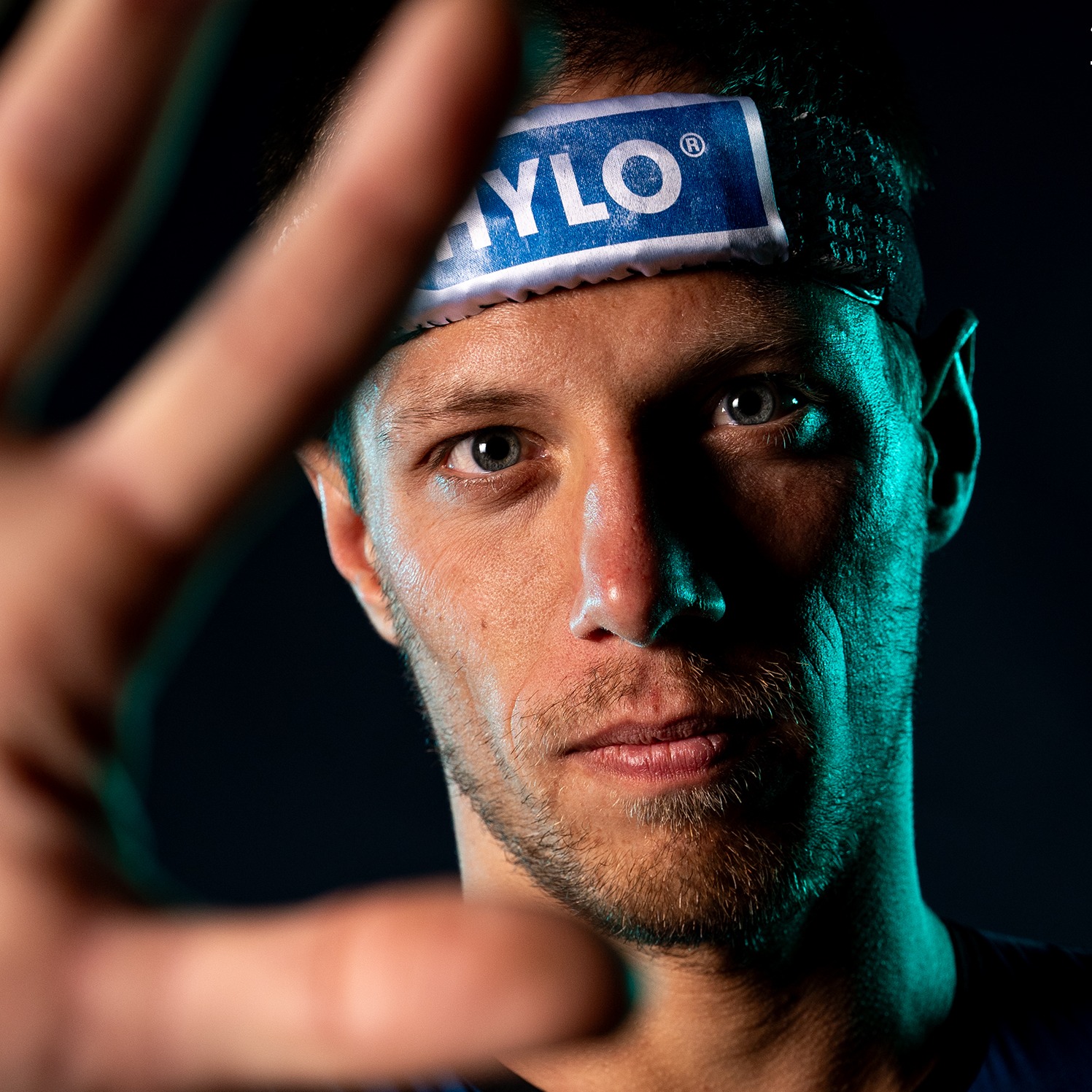
Justus Nieschlag
Singapore T100
Justus' headline numbers
Justus' strategy
Fueling
Carbohydrate is the main fuel you burn when racing. Failing to fuel properly is a leading cause of underperformance in longer races.
Singapore T100 is always a challenging event given the heat and humidity associated with this venue, and de-coupling fueling from hydration is a sensible approach under such conditions. The late-in-the-day starts of T100 races can add an extra layer of complexity, which can be an issue for athletes with dialled morning race routines. Given Justus’ short-course racing background, he is used to adapting his strategy to various start times, meaning that the afternoon start in Singapore was not an issue. After a final carb dose pre-race in the form of a PF 30 Caffeine Gel, Justus hit the water but reported being unable to maintain position and pace with the front pack, which he attributed to the warm water temperature (~30℃!). On the bike, Justus ensured he fueled regularly throughout, which was made simple by sipping on PF 300 Flow Gel from his PF&H Top Tube Flask. Justus then carried a small flask with PF 300 Flow Gel to sip on during the run. Overall, his fueling strategy seemed to work relatively well as he maintained good energy levels throughout, and followed the ‘front-loading’ intake pattern that we often observe in athletes racing the middle distance (i.e. consuming more carbs on the bike compared to the run).
Hydration
Taking on board an appropriate amount of fluid and sodium is essential to maintaining blood volume and supporting the cardiovascular effort needed to perform on race day.
Whilst the absolute amount of sodium and fluid consumed per hour is important, it’s critical to consider these in relation to each other. This is known as 'relative sodium concentration' and it’s expressed in milligrams per litre (mg/L). How much sodium you’re taking in per litre of fluid is more important than the absolute amount taken in per hour.
Sweat sodium concentration (mg/L) is largely genetically determined and remains relatively stable. Knowing how salty your sweat is enables you to replace a good proportion of your sweat losses, which can range from 200-2,000mg/L.
Whilst Justus’s losses are on the low side, getting his hydration strategy right is still crucial when it’s hot and/or humid as his higher sweat rate in these conditions can result in significant net losses over the duration of a race.
Learn moreDue to the high temperatures in Singapore, Justus placed an increased focus on his hydration strategy before and during this race. To start optimally hydrated, he pre-loaded with 750ml of water containing 2 x PH 1500 (Tablets) to provide a slightly higher relative sodium concentration (2000mg/L) than we’d typically recommend for races in slightly cooler conditions. Although we don’t generally recommend this higher concentration for everyone, ahead of such an extremely hot race, this is sensible and would not harm. It's important to note that such a strategy should be practiced in training before using in a race scenario. Prior to the race, and with the help of the Sports Science team, Justus used a published sweat rate prediction model (co-authored by our very own Dr Lindsey Hunt) to estimate his sweat rate during the bike leg and subsequently inform his hydration strategy. Based on this model, the team advised Justus to consume ~1.2L/h while on the bike, with the aim to hit T2 having lost less than 2% body weight; research tells us that performance begins to decrease beyond 2% dehydration. Justus stuck to the plan and consumed just shy of 1.2L/h, consuming 2 x 500ml bottles of water from aid stations in addition to the bottles he was already carrying. Although Justus reported some mild cramping in the first couple of kilometres of the run, this subsided and he reported feeling better and better as the run went on. Justus took advantage of the pro aid station by placing and drinking three bottles (one for each lap of the run) with PH 1500 to ensure he was replacing both fluid and sodium. In addition, he grabbed bottles containing water at the other aid stations on each lap, consuming some of this, but using the majority for cooling by dousing himself.
Caffeine
Beyond the Three Levers of Performance (carb, sodium and fluid), caffeine is one of only a few substances that is proven to improve performance for most endurance athletes as it can help stave off mental and physical fatigue.
Prior to the race, Justus consumed two PF 30 Caffeine Gels to increase the circulating concentration of this stimulant in his bloodstream. However, he didn’t consume any additional caffeine during the race, meaning that his overall caffeine intake was slightly below the quantity recommended to benefit from the ergogenic effects. In future races, he should consider the strategic use of an additional PF 30 Caffeine Gel to ensure he meets the recommendations for caffeine intake.
How Justus hit his numbers
Here's everything that Justus ate and drank on the day...
Justus' weapons of choice
Final thoughts
Justus' full stats
Data Confidence?
There is an adequate level of accuracy in the data collected and the numbers reported. The athlete manages to recall what they ate and drank including most specifics (brands flavours quantities plausible estimations of volumes). However there are estimations made within the data which affect the overall confidence level in the data reported.